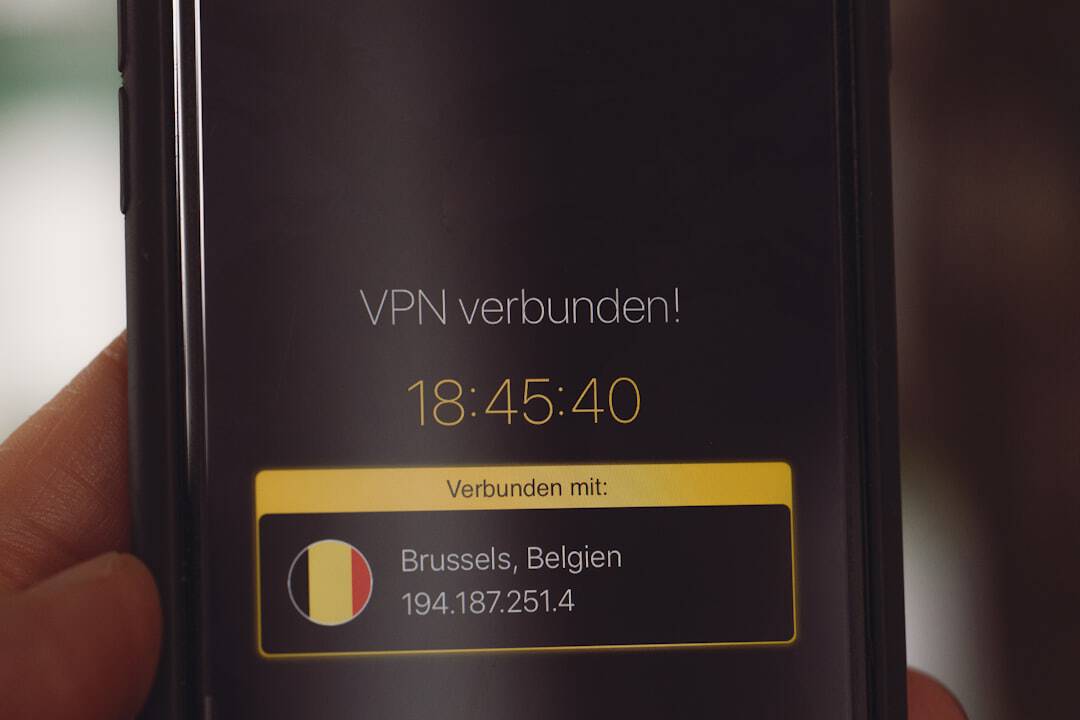Zero Trust Network Access (ZTNA) is a security model designed to address the limitations of traditional network security approaches. Unlike conventional models that rely on perimeter-based defenses, ZTNA operates on the principle that threats can originate from both inside and outside the network. This model prioritizes the verification of user and device identities, granting access based on specific policies, regardless of the user’s location or network connection.
ZTNA incorporates various technologies to ensure that only authorized users and devices can access specific resources. These technologies include identity and access management (IAM), multi-factor authentication (MFA), encryption, and micro-segmentation. By implementing these measures, ZTNA minimizes the risk of unauthorized access and lateral movement within the network, making it an effective solution for securing modern IT environments.
The core principle of ZTNA is the assumption of zero trust, meaning that no user or device is inherently trusted, even within the corporate network. Instead, ZTNA emphasizes continuous verification of user and device identities and applies access controls based on specific policies. This approach ensures that only authorized entities can access sensitive resources, enhancing overall network security.
Key Takeaways
- Zero Trust Network Access (ZTNA) is a security model that requires strict identity verification for every person and device trying to access resources on a private network, regardless of whether they are inside or outside the network perimeter.
- ZTNA can be used for remote access, allowing employees to securely connect to company resources from any location, without the need for a traditional VPN.
- ZTNA can also be used for partner and vendor access, providing secure and controlled access to specific resources for external parties, without compromising the overall network security.
- ZTNA can enable secure access to cloud resources, ensuring that only authorized users and devices can connect to cloud-based applications and data.
- ZTNA can support BYOD policies by allowing employees to securely access company resources from their personal devices, while maintaining strict security controls and policies.
- ZTNA can be used to secure access for IoT devices, ensuring that only authenticated and authorized devices can connect to the network and access specific resources.
- ZTNA can help organizations meet compliance and regulatory requirements by providing a secure and auditable access control solution, ensuring that only authorized users and devices can access sensitive data and resources.
ZTNA Use Cases for Remote Access
One of the primary use cases for ZTNA is remote access. With the rise of remote work and the increasing use of mobile devices, organizations need a secure way to provide employees with access to corporate resources from outside the traditional network perimeter. ZTNA enables organizations to implement secure remote access solutions that verify the identity of remote users and devices, and apply access controls based on specific policies.
For example, a company may use ZTNA to provide remote employees with secure access to internal applications and data, without exposing the corporate network to potential threats. By implementing ZTNA for remote access, organizations can ensure that only authorized users and devices can connect to the corporate network, regardless of their location or the network they are using. In conclusion, ZTNA is an ideal solution for securing remote access, as it allows organizations to implement strong identity verification and access controls for remote users and devices.
This helps to minimize the risk of unauthorized access and data breaches, while enabling employees to work securely from anywhere.
ZTNA Use Cases for Partner and Vendor Access

Another important use case for ZTNA is providing secure access to partners and vendors. Many organizations need to collaborate with external parties, such as suppliers, contractors, and business partners, and often need to grant them access to specific resources within their IT environment. ZTNA enables organizations to implement secure access solutions for partners and vendors, ensuring that only authorized entities can connect to their network and access sensitive data.
For example, a company may use ZTNA to provide secure access to a third-party vendor who needs to connect to their network to perform maintenance on a critical system. By implementing ZTNA for partner and vendor access, organizations can ensure that only authorized individuals from the external party can connect to their network, reducing the risk of unauthorized access and potential security breaches. In summary, ZTNA is an effective solution for securing partner and vendor access, as it allows organizations to implement strong identity verification and access controls for external parties.
This helps to protect sensitive data and resources from unauthorized access, while enabling collaboration with external entities in a secure manner.
ZTNA Use Cases for Cloud Access
| Use Case | Description | Metric |
|---|---|---|
| Secure Remote Access | Enabling secure access to cloud resources for remote employees | Number of remote users connected |
| Third-Party Access | Providing secure access to third-party vendors or partners | Number of third-party accounts provisioned |
| BYOD Security | Securing access for Bring Your Own Device (BYOD) environments | Number of BYOD devices registered |
Cloud computing has become an integral part of modern IT environments, enabling organizations to leverage scalable and flexible resources for their applications and data. However, securing access to cloud resources can be challenging, especially when dealing with multiple cloud providers and a diverse set of users and devices. ZTNA provides a solution for securing cloud access by implementing strong identity verification and access controls for users and devices connecting to cloud resources.
For example, an organization may use ZTNA to provide secure access to cloud-based applications and data for their employees, ensuring that only authorized individuals can connect to the cloud environment. By implementing ZTNA for cloud access, organizations can minimize the risk of unauthorized access and data breaches, while leveraging the benefits of cloud computing. In conclusion, ZTNA is well-suited for securing access to cloud resources, as it enables organizations to implement strong identity verification and access controls for users and devices connecting to the cloud environment.
This helps to protect sensitive data and applications from unauthorized access, while enabling organizations to take full advantage of cloud computing.
ZTNA Use Cases for BYOD (Bring Your Own Device) Policies
Many organizations allow employees to use their personal devices, such as smartphones and tablets, for work purposes, a practice known as Bring Your Own Device (BYOD). While BYOD policies can improve productivity and flexibility, they also introduce security risks, as personal devices may not have the same level of security controls as corporate-owned devices. ZTNA provides a solution for securing BYOD environments by implementing strong identity verification and access controls for personal devices connecting to corporate resources.
For example, an organization may use ZTNA to provide secure access to corporate applications and data for employees using their personal devices, ensuring that only authorized individuals can connect to the corporate network. By implementing ZTNA for BYOD policies, organizations can mitigate the security risks associated with personal devices, while allowing employees to use their preferred devices for work purposes. In summary, ZTNA is an effective solution for securing BYOD environments, as it enables organizations to implement strong identity verification and access controls for personal devices connecting to corporate resources.
This helps to minimize the risk of unauthorized access and data breaches, while allowing employees to use their own devices in a secure manner.
ZTNA Use Cases for IoT (Internet of Things) Devices

The proliferation of Internet of Things (IoT) devices in modern IT environments presents unique security challenges, as these devices often have limited security controls and may be vulnerable to exploitation by cyber attackers. ZTNA provides a solution for securing IoT devices by implementing strong identity verification and access controls for these connected devices. For example, an organization may use ZTNA to provide secure access to IoT devices within their network, ensuring that only authorized devices can connect and communicate with other resources.
By implementing ZTNA for IoT devices, organizations can mitigate the security risks associated with these connected devices, while leveraging their benefits for automation and data collection. In conclusion, ZTNA is well-suited for securing IoT environments, as it enables organizations to implement strong identity verification and access controls for connected devices. This helps to protect against unauthorized access and potential security breaches, while allowing organizations to leverage the benefits of IoT technology in a secure manner.
ZTNA Use Cases for Compliance and Regulatory Requirements
Compliance with industry regulations and data protection laws is a critical concern for many organizations, as failure to meet these requirements can result in severe penalties and reputational damage. ZTNA provides a solution for addressing compliance and regulatory requirements by implementing strong identity verification and access controls for users and devices accessing sensitive data. For example, an organization operating in a highly regulated industry may use ZTNA to ensure that only authorized individuals can access sensitive data in compliance with industry regulations.
By implementing ZTNA for compliance purposes, organizations can demonstrate that they have implemented strong security measures to protect sensitive data from unauthorized access. In summary, ZTNA is an effective solution for addressing compliance and regulatory requirements, as it enables organizations to implement strong identity verification and access controls for sensitive data. This helps to ensure compliance with industry regulations and data protection laws, while protecting sensitive information from unauthorized access.
In conclusion, Zero Trust Network Access (ZTNA) is a powerful security model that addresses the shortcomings of traditional network security approaches by focusing on continuous verification of user and device identities, and applying access controls based on specific policies. ZTNA has a wide range of use cases, including securing remote access, partner and vendor access, cloud access, BYOD policies, IoT devices, and compliance requirements. By implementing ZTNA solutions for these use cases, organizations can minimize the risk of unauthorized access and potential security breaches while enabling secure connectivity in modern IT environments.
If you’re interested in learning more about the potential use cases for Zero Trust Network Access (ZTNA), you may also want to check out this article on business collaboration in the metaverse. This article explores how industries are leveraging the metaverse for enhanced collaboration and innovation, which could have implications for ZTNA implementation in virtual environments.
FAQs
What is Zero Trust Network Access (ZTNA)?
Zero Trust Network Access (ZTNA) is a security framework that requires all users, devices, and applications to be authenticated and authorized before accessing a network. It focuses on the principle of “never trust, always verify” to ensure secure access to resources.
What are some use cases for ZTNA?
Some common use cases for ZTNA include secure remote access for employees, third-party access to corporate resources, secure access for IoT devices, and secure access for cloud-based applications.
How does ZTNA improve security?
ZTNA improves security by implementing a least-privilege access model, where users and devices are only granted access to the specific resources they need. This reduces the attack surface and minimizes the risk of unauthorized access.
What are the benefits of implementing ZTNA?
Some benefits of implementing ZTNA include improved security posture, better control over access to resources, enhanced visibility into network traffic, and the ability to enforce security policies consistently across different environments.
How does ZTNA differ from traditional VPN solutions?
ZTNA differs from traditional VPN solutions by providing more granular control over access to resources, implementing a zero-trust approach to security, and offering better scalability and flexibility for modern network environments.











Leave a Reply